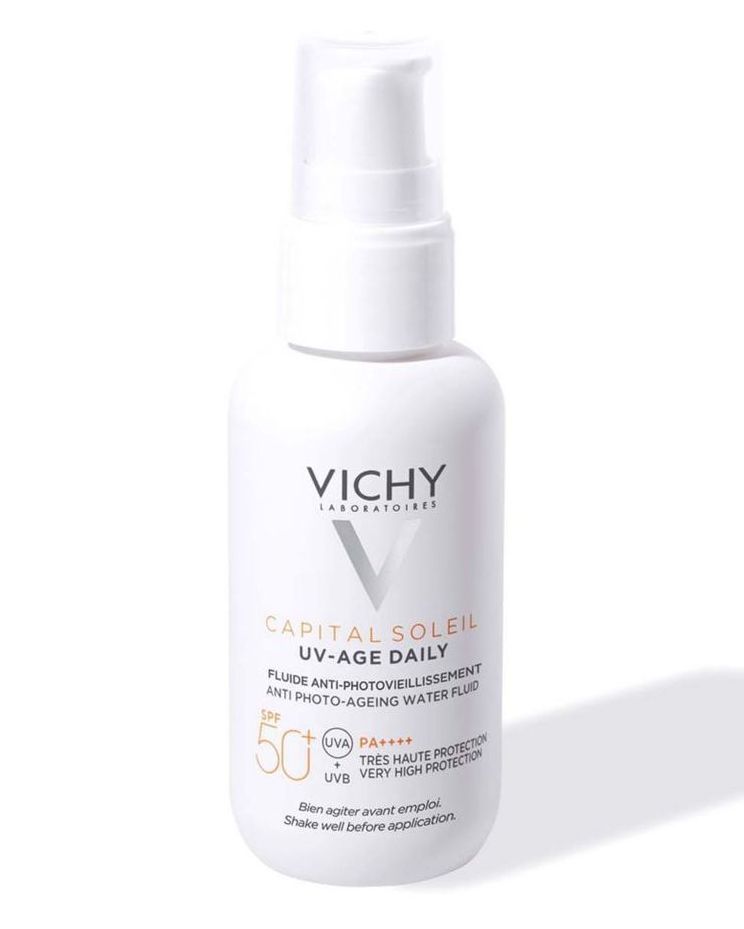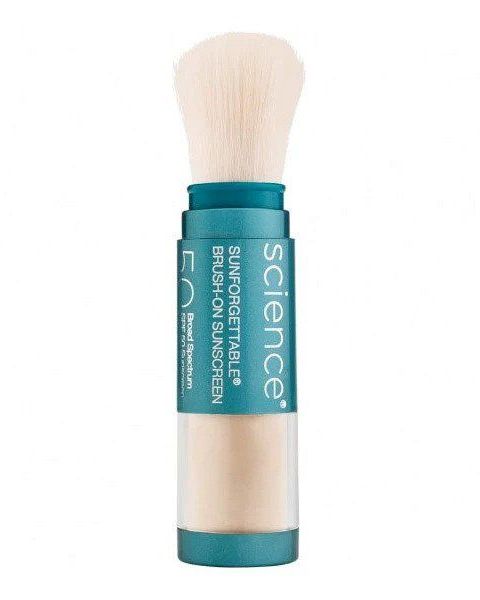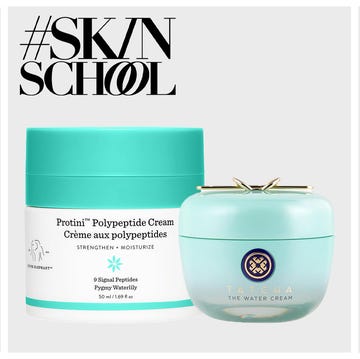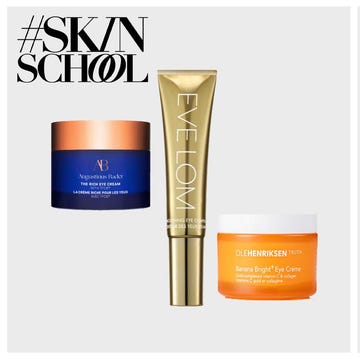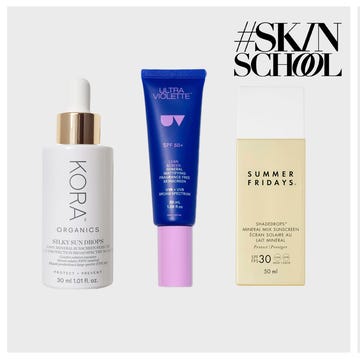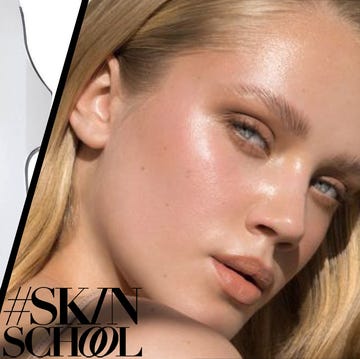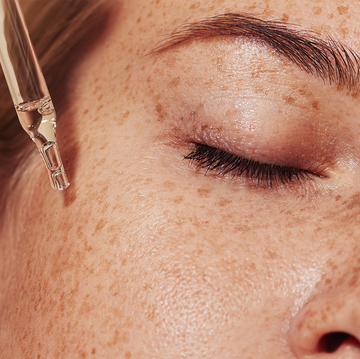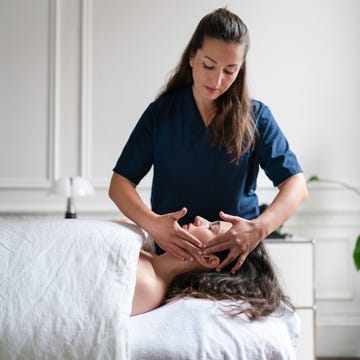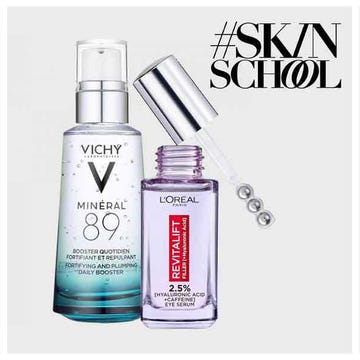We earn a commission for products purchased through some links in this article.
#SkinSchool: The 15 best face SPFs and why it's important to stay protected all year round
Plus, the difference between chemical and mineral formulas along with expert tips on how to maximise their protective benefits
When it comes to caring for our skin, prevention is always better than cure – and this is especially true of sun damage.
While it's likely we all diligently apply a good suncream during a hot-weather holiday, many of us neglect to wear a facial SPF in our everyday lives, despite the fact that sun damage can occur as long as there's daylight (and even when sitting by a window), no matter where you are. This time last year, a Yougov survey found that 40 per cent of people in the UK only buy SPF when they're on holiday, and 55 per cent of us only wear it when the sun is out highlighting that, when it comes to adopting a properly protective skincare regime, many of us are still not quite there.
The best sunscreens for face, at a glance
"No matter the weather, the sun's harmful UVA and UVB rays are ever-present throughout the year, causing damage to the DNA in your skin cells that can result in premature ageing, skin cancer and a host of other skin-related issues," confirms Kimberley Medd, head of clinic at Face the Future. "Because of this, it’s important to wear your shield of UV protection every day to protect your skin against the likes of melanoma skin cancer."
Alongside the sunburn you can see (particularly if you like to sunbathe), the sun also damages your skin on a deeper level, with the effects – think fine lines and pigmentation – coming to the surface years later. And, it goes without saying, sunscreen is especially key in the fight against skin cancer, which is on the rise in younger people.
Why a facial sunscreen is so important
Consultant dermatologist Dr. Hiva Fassihi stresses the importance of wearing SPF on your face every day – even when the sky is cloudy. “It makes a difference, not only from the perspective of protecting against skin cancer, but also from an ageing point of view in the long-term,” she says.
The sun emits ultra-violet radiation, which is split into UVA and UVB rays. “UVB has a shorter wavelength and it’s a bit more damaging in that it can cause sunburn and is associated with causing skin cancers in future life," continues Dr Fassihi. "UVA is slightly different, though it can also cause skin cancers. It penetrates deeper into the skin and causes problems with photo-ageing, and breaking down collagen and elastin. It’s important we use sunscreens that cover us against UVB and UVA, both for skin cancer prevention and for ageing.”
Thankfully, all good facial sunscreens now offer the necessary ‘broad-spectrum’ protection. What’s more, the best face SPFs on the market are a far cry from the thick, pore-clogging creams of old, offering lightweight textures, advanced skincare benefits and flattering dewy tints.
Face SPF: mineral or chemical?
Sun protection is split generally into two forms: chemical and physical (the latter sometimes referred to as ‘mineral spf’). Chemical filters penetrate the skin's surface (which is why they can take time to activate) and absorb the UVA and UVB rays, while physical filters sit on top of the skin, reflecting UV rays back from the face. Some formulas offer a mixture of both.
As consultant dermatologist Justine Hextall explains, there are pros and cons to each. “Chemical blocks often rub in more easily and are felt to have better protection against UVA. However, they can sometimes cause irritation and allergic reactions," she says. This is of particular concern for rosacea sufferers, as chemical filters emit a low level of heat energy when converting the rays, meaning they could contribute to a flare-up.
"Physical blocks usually contain titanium dioxide and zinc oxide and are better tolerated [on sensitive skin]," continues Dr Hextall. "The downside is that these thick white creams are often considered less cosmetically acceptable, particularly with darker skin tones. However, there are now some innovative new physical sunscreens that use ingredients such as clear or nano zinc, or contain a flattering tint, meaning they’re appropriate for use on all skin tones.
How to make facial SPF work with make-up
It's true that SPF doesn't always play well with make-up – especially when you're required to top up the sunscreen every few hours.
Many brands will have you believe that the solution to this is simply to wear a base containing SPF, but this is not enough; the amount of SPF we need to apply would equate to extremely heavy foundation. As dermatologist Dr Hiba Injibar explains, no foundation can be trusted to act as your sole sun protection. "If your foundation contains SPF, don't necessarily rely on it for the most effective level of protection. Make-up isn't always evenly applied and it wears off easily throughout the day," she says.
The solution actually lies in strategic layering. "After applying your SPF, wait for a few minutes to allow your suncream to set. Be generous with the application. If you're continuously in the sun, make sure you're reapplying your sunscreen every three-to-four hours. I know it's hard but, if you have the time, try to take off all of your make-up and reapply, because ideally SPF should go directly onto skin," Dr Injibar explains. "This is obviously not realistic in every situation, so if you don't have the time, use a loose powder that contains SPF to top yourself up. Just make sure that first application is thorough and directly onto the skin." Editor's note: a milky or creamy texture is less likely to cause foundation pilling compared to clear gel SPFs, and SPF sprays can be great for over-make-up top-ups.
From the SPF moisturisers that protect your skin properly to brightening tints, clear sunscreens and and spritz-on mists for topping up throughout the day, these are the very best face SPFs that promise not to ruin your make-up, clog your pores, or make your skin feel hot and bothered.
The best face SPFs to wear all year round










